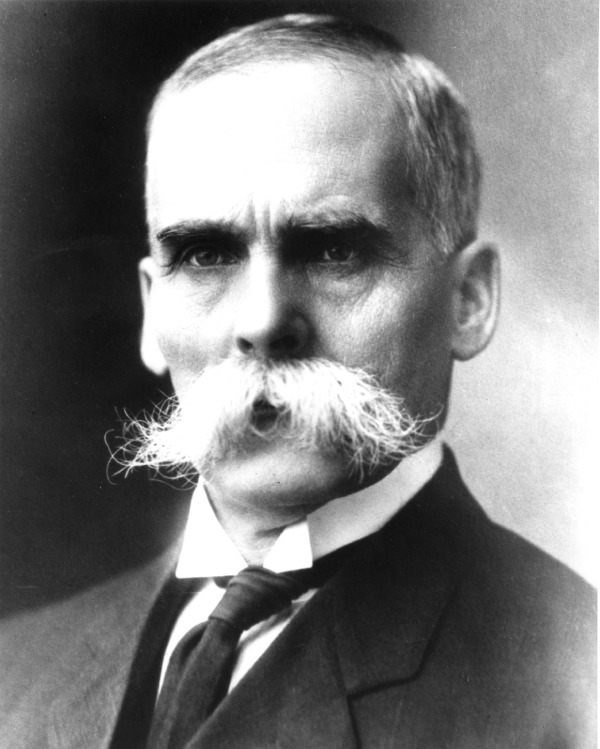Frank Oliver National Historic Person (1853-1933)
The Historic Sites and Monuments Board of Canada is reviewing designated national historic persons, events and sites for their connection to the history and legacy of the residential school system. This review responds to the Truth and Reconciliation Commission’s Call to Action 79, which calls on the federal government to commemorate the history and legacy of residential schools.

© Alfred Blyth / City of Edmonton Archives / EA-10-2245
Frank Oliver was designated as a national historic person in 1947.
The Historic Sites and Monuments Board of Canada reviewed this designation in 2023. The following aspects of Oliver's contributions to Canadian history were declared of national historic significance.
Reasons for designation
As the owner and editor of the Edmonton Bulletin from 1880 and a territorial and federal politician, Oliver held a vision of the Canadian West which prioritized the demands of white British and American agricultural settlers, criticizing federal land, tariff, and railway policies, arguing that western voices were not being heard to contribute to the national economy and Canadian political life, while questioning the place of Indigenous and non-British peoples in the West’s future. In turn-of-the-20th-century Canada, he represents the desire of white Westerners to control the region’s economy and political life, which was supported by the intolerance and racism of that era aimed at recruiting British immigrants and excluding racialized people and Eastern Europeans from Canada.
As minister of the interior from 1905 to 1911, Oliver promoted restrictive immigration policies that aimed at excluding Black and Asian immigrants from Canada, and particularly the Canadian West, reflecting racist views held by many at the time.
As a politician and journalist, he successfully advocated for the surrender of lands within First Nations reserves, and personally benefited from the implementation of colonial policies by acquiring, in one instance, some of these lands. As superintendent of Indian Affairs from 1905 to 1911, he oversaw an expansion of Indian Residential Schools and amended the Indian Act to enable forced surrender of First Nations reserve lands near towns which effectively dispossessed several communities in Western Canada of their land.
Review of designation
Reviews are undertaken on an ongoing basis to ensure that designations reflect current scholarship, shifts in historical understandings, and a range of voices, perspectives and experiences in Canadian society.
In 2023, this designation was reviewed due to controversial beliefs and behaviours, colonial assumptions, outdated terminology, and an absence of a layer of history in the commemorative plaque text. The plaque text, approved in the 1970s, highlighted Oliver’s founding of the Edmonton Bulletin newspaper and his political career. The text did not reference his work to enable the forced surrender of lands within First Nations reserves, or that he oversaw an expansion of Indian Residential Schools. The text also did not include his promotion of restrictive immigration policies aimed at Black and Asian immigrants.
New reasons for designation were developed that include Oliver’s impact on policies concerning Indigenous Peoples and immigration. The original plaque was removed. A new plaque will not be prepared as the limited text of a plaque does not allow for adequately communicating this complex history.
Source: Historic Sites and Monuments Board of Canada, Minutes, June 2022; December 2022.
The National Program of Historical Commemoration relies on the participation of Canadians in the identification of places, events and persons of national historic significance. Any member of the public can nominate a topic for consideration by the Historic Sites and Monuments Board of Canada.